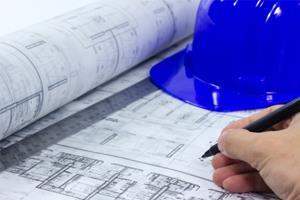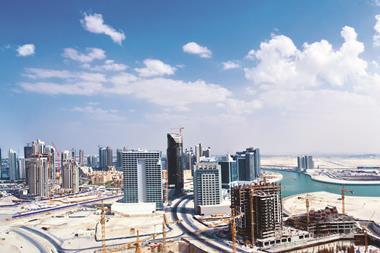Green infrastructure is good for society and the environment and is increasingly touted as offering business benefits, but how feasible is it to construct green buildings? Experts from Balfour Beatty and Swedish construction firm NCC discuss the challenges

Construction companies are under increasing pressure to develop environmentally friendly, ‘green’ infrastructure as the level of carbon dioxide gases in the air continues to creep to dangerous levels. In May 2013, CO2 emissions passed the symbolic mark of 400 parts per million – the highest level in human history.
Indeed, the construction industry uses a lot of energy in the creation of buildings and infrastructure, emitting significant levels of CO2 and other pollutants in the process.
Against a backdrop of growing urbanisation, global population growth and a high demand for new housing and other facilities, the majority of construction companies may prioritise completing projects on time and on budget over ‘going green’.
However, construction companies, among others, would be wise to consider the long-term damage to the environment and society of ignoring the green agenda.
Chris Whitehead, head of programme management office at Balfour Beatty’s – a company of which about 26% of its US turnover comes from green infrastructure – sums up well the consequences for many cities worldwide. “Pollution is impairing the air quality in the largest cities. For example, 92% of the largest 70 cities in China have an average annual particle pollution of 2.5 – worse than the national standard. [Pollution] is also an issue in many European cities, including London. Potable water availability is becoming an issue in the developed as well as the developing world as existing sources are compromised by pesticide contamination, eutrophication and reduced rainfall.”
To contain the average temperature rise to no more than 2°C by 2050, as recommended by the Intergovernmental Panel on Climate Change, construction businesses “need to reduce their emissions year on year, yet presently [CO2 emissions] are still on the increase,” Whitehead says.
What is green infrastructure?
One way of tackling the CO2 problem is in developing green infrastructure. These builds make use of natural components to provide solutions to urban and climatic challenges.
For example, instead of building flood protection infrastructure, a green solution would be to let a natural wetland absorb the excess water from heavy rain, thus preventing CO2 emission from the construction of flood barriers.
Additionally, features such as green roofs, parks and greenways will remove CO2 from the air. There are some success stories. An urban renewal and rehabilitation project , undertaken between 1998 and 2002, of a social housing estate, Ekostaden Augustenborg, in Sweden delivered many positive outcomes.
If an investor has two or three options, then green [buildings] have the competitive advantage
The estate was built between 1948 and 1952 to international acclaim, offering, what then to be high-quality social housing, local schools, shops, employment and social facilities. However, over the years, the estate fell into disrepute owing to general neglect, economic decline and severe unemployment.
Buildings suffered from severe damp and bad ventilation because of poor insulation made from steel sheeting. During renovation, the outer wall covering were removed and new sustainable insulation layers were installed. As a result, energy efficiency increased by approximately 35%, compared to when the premises were first built. A new school made use of eco-friendly elements such as ground source heat pumps, solar thermal panels and composting toilets. Additionally, 10,000m2 of green roofs were laid onto the buildings and an open storm water system was installed.
The project cost about €22m and, according to the European Commission – which has adopted a green infrastructure strategy – the benefits from this investment are stacking up. For instance, rainwater runoff rates have declined by 50%, residents have made significant energy savings and biodiversity has increased by 50%.
Green infrastrcture may also give business a competitive advantage. Anders Esbjörnsson, group head of risk at NCC AB, the second largest construction company in the Nordic region, says: “A 20-year-old building is hard to sell to investors, not only because it is ugly, but because it is energy-consuming. If an investor has two or three options, then green [buildings] have the competitive advantage.”
Challenges
Although there are many environmental and socially ethical benefits to building green, sustainable builds such as green infrastructure, are in real-term cash value expensive. “People generalise that low-carbon infrastructure costs less, but that is not true for all classes of infrastructure,” Whitehead says. “Although the ‘low carbon = low cost’ theme of the Infrastructure Carbon Review [published by the UK government in 2013, setting out actions to reduce carbon from the construction sector] holds good for economic infrastructure, green buildings need investment over and above the norm.
As clients become more environmentally aware, they will select companies that can deal with the green agenda
“Therefore companies can produce carbon efficient buildings only in collaboration with an enlightened client.”
However, he adds: “The industry can make inroads into its carbon footprint. Projects such as the Anglian Water Carbon Challenge [an initiative developed by Anglian Water in the UK, which manages and provides water to the of East of England, to halve its overall greenhouse emissions by 2035 and halve embodied carbon in all new assets it builds in 2015] demonstrate that in the case of economic infrastructure, it can save cost en route. However, [the company] will never be carbon neutral without the decarbonisation of the grid, which at the moment is a challenge.”
How then, can businesses promote green infrastructure and reduce carbon emissions?
Business should follow their clients and local legislation, argues Whitehead. From a UK perspective, he says: “Look at the demand from large corporates such as Google and PwC for low-impact buildings. Look at the sales figures for housing developments such as Little Kelham in Sheffield. Understand the implications of the latest building regulations such as the government’s Energy Savings Opportunity Scheme and the carbon strategies of the National Health Service, the country’s universities and the Highways Agency.”
Construction companies that are serious about green construction and sustainable builds would also be wise to refer to the European Commission’s Green Infrastructure Strategy. Although expensive and challenging to get off the ground, green infrastructure will yield many benefits for society and the environment. If that is not convincing enough, then as Whitehead concludes: “As clients become more environmentally aware, they will select companies that can deal with the green agenda.”




















No comments yet